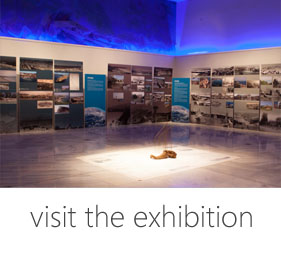Name
Porto LagosCurrent Name
Porto LagosAncient Name
PoroiMedieval Name
Poroi, Peritheorion (?)History of the name
The name Poroi comes from the ancient Greek word “poros” which means passage, due to the location of the settlement at the spout of Vistonida lake.
Place :
Country
GreeceGeopolitical Unit
ThraceAdministrative subdivision
Prefecture of Xanthi, Municipality of AvderaLocation
The ancient settlement was built upon two isles on the spout of Vistonida lake.Foudation Date
UnknownCurrent condition
Today, in the place of the medieval city of Poroi, stands a picturesque village (Porto-Lagos).History
In the byzantine period, Poroi used to be an important strategic and commercial place and that is because its location made it possible to control trading through the sea. The population was also involved in fishing since the area was ideal for shellfish farming and fishing.
The oldest reference on Poroi concerns the participation of bishop Nikeforos in the Synod of 879. From the 10th until the 12th century, it is being referred as a diocese subsumed to the metropolis of Traianoupolis.
The city, as well as other settlements of the area, was destroyed by the Bulgarian Czar Ioannitzis (Kalogiannis or Skylogiannis) in 1205-06. From one point of view, the medieval settlement, before being destroyed, was named Peritheorion, which later was given to Anastasioupolis.
Description
We don’t have much evidence on the history of the settlement during antiquity and the early Christian era.
On the contrary, there are a lot of byzantine ceramic fragments found in the area and mainly amphorae, which show the development of the port from the 9th – 10th century and on. military, fishing and commercial character of Poroi.
Early Christian marble architectural fragments were incorporated to the Episcopal church and to Hagios Nikolaos, the metochion of the Monastery of Vatopaidi, which is built on two isles of the lagoon. Amongst the findings in the area there are one copper cross-reliquaries, belt buckles and copper coins, which date from the 4th century BC to the byzantine ages.
In the center of the settlement, next to the sea, the Episcopal church of Poroi was excavated in 1950. It belongs to the type of an early cross-in-square church, dating to the 9th-10th century. At its foundations there were found traces of an early Christian building. A cemetery was formed around the church in the 12th-13th century.
Harbor
Today, the picturesque fishing-village has a port which serves for the trading of the prefecture’s products. At the same time it is the center of the fishing cooperative and hosts many fishing vessels. No traces of the medieval port are preserved.
Fortification
From the fortification of the city, parts of the foundations of the enclosure nearby the lagoon were found, having four-sided towers and upward stairs in gallery surrounding it. On the side of the gateway, the wall was a simple enclosure. On the South-West corner, there used to be a large four-side tower, in which possibly the archibishop Dorotheos of Peritheorion was imprisoned in 1381.
Medieval Sites
Textual Sources
• Ακροπολίτης, Georgii Acropolitae Opera, Augustus Heisenberg I-II, Leipzig 1903, σ. 278.
• Καντακουζηνός IV, Ι 470 – 471.
• Sacrorum Conciliorum nova et amplissima collection, J. D. Mansi, XVII 376 B.
Bibliography
• Ζήκος Ν., Βυζαντινό οδοιπορικό στη Θράκη, Αρχαιολογία 13 (1984), σ. 72 – 73.
• Κουρκουτίδου – Νικολαϊδου Ε., Χαλκοί σταυροί εκ του Περιθεωρίου, ΑΑΑ V3, 1972, σ. 374 – 380.
• Κυνηγόπουλος Ν., Άγιος Νικόλαος, Το Μετόχι της Ι.Μ.Βατοπαιδίουστο Πόρτο Λάγος. Διδακτορική Διατριβή, Θεσσαλονίκη 1998, σ.31 – 46.
• Μπακιρτζης Χ., Βυζαντινή Θράκη, Θράκη, Γενική Γραμματεία Περιφέρειας Ανατ. Μακεδονίας – Θράκης, 1994, σ.162.
Links
http://www.xanthi.ilsp.gr/thraki/history/his.asp?perioxhid=B0289
http://www.pexanthis.eu/index.php/menu-tourismos/pedini/portolagos.html
Visual Material
(plans, maps, photos etc from the city and the harbor)














